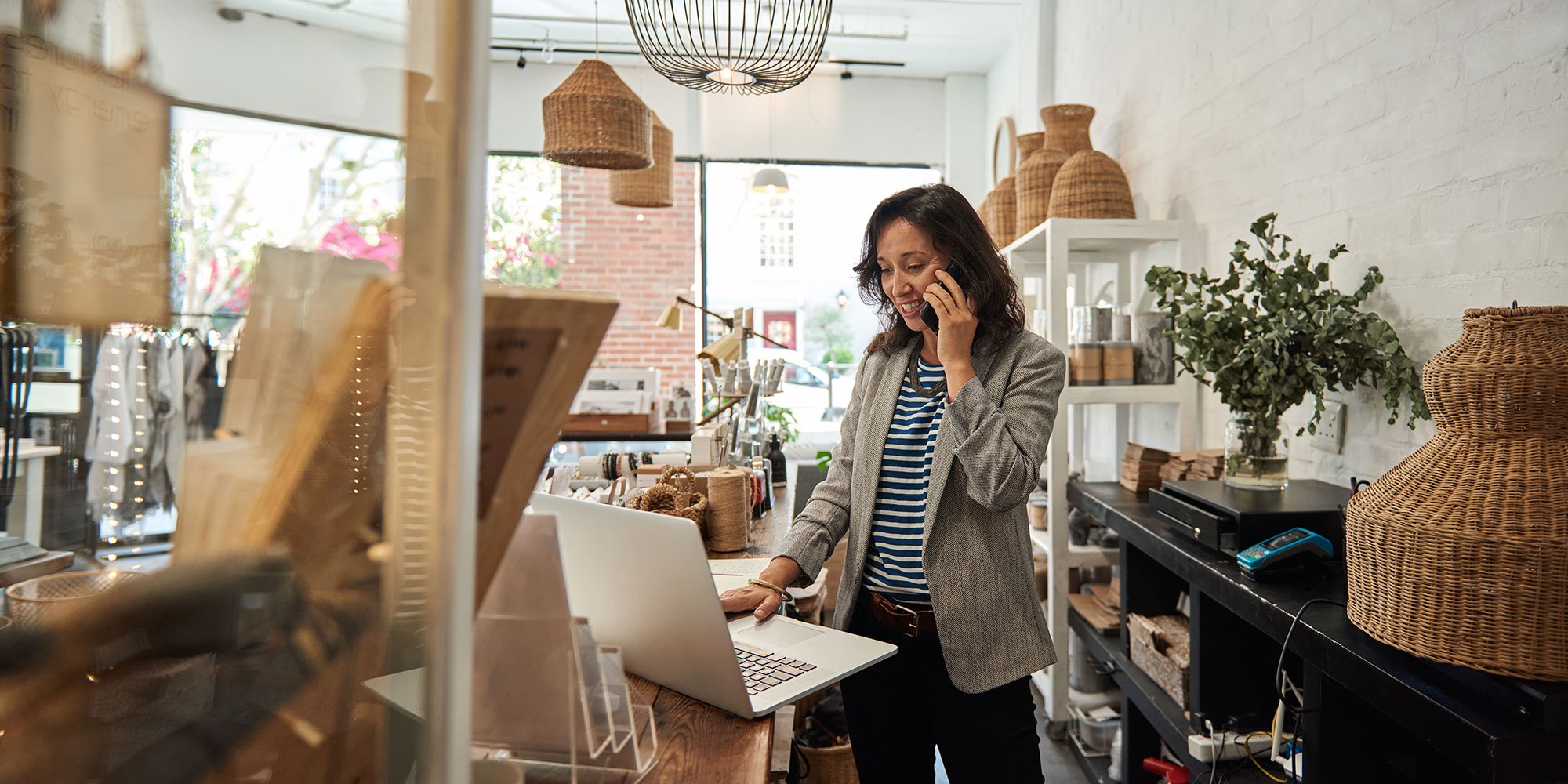
13 Steps to Prepare for Opening a New Store
Are you preparing to open a new store for your retail business? Whether you’re launching your first location or expanding to somewhere new, it’s important to do the necessary legwork ahead of time to make your new retail store a success and maximize your profits.
At Select Funding, we provide business financing and equipment financing to many clients in the retail sector and we often provide advice to go with our affordable small business financing. Our clients sometimes ask us about opening a new store, so we’ve created this guide with 13 steps to prepare for your new store opening.
How Much Does It Cost to Open a New Store?
The first question when it comes to opening a new retail store is how much it will cost. The answer depends on several factors, including the size of the store, its location, the lease, and the products being sold.
As a rule of thumb, you should expect to spend between $50,000 and $100,000 opening a new store, with costs toward the low end for a small store with inexpensive products and toward the high end for large and/or luxury stores.
If you’re unsure how much to budget, the Small Business Administration has a Startup Costs Worksheet you can use to estimate your total costs. It’s always a good idea to build some padding into your budget to allow for unanticipated expenses.
13 Steps to Open Your New Store
As you prepare for your new store opening, it may be helpful to have a checklist to guide you through the most important steps.
#1: Conduct Market Research
The first step is to do market research if you haven’t already done so. If this is your first store, you’ll need to make sure you understand who is most likely to buy your products and where they are.
Even if you’re opening a second location, you’ll still need to do market research in your new area that includes an analysis of your competitors.
#2: Create a Business Plan and Budget
The next step is to write a business plan if you haven’t already done so and create a budget for your store opening. Your business plan should include a description of your company, its business structure, financial goals, market research, a marketing plan, and more.
We already talked about how much you should expect to spend to open a new store, but your budget should get into specifics including rent, design, inventory, marketing, and so on. Both your business plan and budget will play a role in helping you secure financing to open your new store.
#3: Take Care of Legal Requirements
Any time you open a new business, it’s essential to take care of your legal obligations. For a retail store, these may include the following:
- Choose a business structure
- Register your business with the Secretary of State
- Apply for a fictitious business name with the County Clerk’s office
- Obtain an EIN from the IRS if you don’t already have one
- Open a business bank account
- Research city and state licensing and permit requirements and apply for what you need
- Purchase business insurance
- Business owners insurance
- General liability insurance
- Workers compensation
- Employee health insurance
- Unemployment insurance
We strongly recommend working with a business attorney to make sure that you take care of all legal requirements before opening a new store.
#4: Create Your Brand
Retail store branding is what tells potential customers what to expect from your store before they get there. Your brand incorporates everything about your company, including the following:
- Your store name
- Your logo
- Your brand colors
- Your brand fonts
- The tone of your marketing and advertising
- Your company mission
You may want to work with a marketing agency to create your brand if you haven’t already built a brand that’s memorable. Your retail store should align with your online branding to create a seamless experience for customers.
#5: Explore and Obtain Financing
After you’ve done the necessary legal preparation, it’s time to think about financing for your business. Many small businesses, particularly start-ups, lack the working capital they need to open a retail store.
Assuming that you are renting a retail space, you may be able to qualify for affordable small business financing to pay for rent, design, business equipment, and marketing. The documentation you will have already prepared, including your business plan and budget, will help you apply for the financing you need.
#6: Find the Right Location for Your New Store
Once your financing is in place, it’s time to find a location for your store. You may already have a location in mind. Here are some of the things you should factor into your search:
- Your budget
- Accessibility, including proximity to major roads and public transportation
- Parking
- Foot traffic
- Competition
- Logistics, including how easy it will be to send and receive shipments
- Safety
Depending on which products you’re selling and the location you’re considering, it may not be a big deal to have competitors close by. You’ll need to rely on your market research to tell you whether the area can support multiple stores selling similar products.
#7: Visualize the Ideal Customer Experience
The experience that customers have when they come to your store will determine how happy they are and whether they’re likely to return or recommend your store to their friends. Before you design the interior space, we suggest thinking about how you want customers to feel–and what you want them to do—in your store.
Make sure to include your branding in the experience. For example, if your brand conveys luxury and elegance, your retail store should do the same.
#8: Choose a Layout for Your Store
The layout of your store plays an essential role in creating a pleasant experience for your customers. There are multiple layout options to consider and each has its advantages. Here are some examples:
- Grid layout. Most often used in grocery stores and pharmacies.
- Straight layout. Commonly used in convenience stores and liquor stores.
- Forced path. Used by large retailers like IKEA.
- Loop layout. Common in larger retail stores.
- Diagonal store layout. Most effective for high-end retail stores.
You should choose a layout that highlights your products and sends the right message to your customers.
#9: Work with a Retail Designer
We strongly recommend working with a retail designer unless you have direct experience creating a store interior. A good designer will be able to help you choose a layout, refine your branding, and optimize the customer experience.
As a rule you should expect to spend between 10% and 15% of your design budget on a designer. Keep in mind that designers often have close relationships with vendors and may be able to help you save on display cases and other items.
#10: Hire Staff
Before you open, you’ll need to interview and hire experienced staff to work for you. While many new stores have minimal staff, you probably won’t be able to be there all the time.
Hiring may include advertising online and in local newspapers. You should think about what experience you want your staff to have and articulate all prerequisites in your job listings.
#11: Negotiate with Vendors
As the interior of your store is being designed, you’ll have time to negotiate with vendors, create purchase orders, and stock your store.
This is a good time to think about how you want to pay for purchases. For example, will you pay with cash? With a credit card? By check? Do you want 30 day terms? Do you need working capital to pay for inventory? These are all things to consider because paying invoices on time is a must if you want your business credit score to be high.
#12: Do a Soft Opening
A soft opening is what happens when you open your store without making a big announcement about it. It’s useful because you can get a feeling for what works and what doesn’t before your grand opening.
At this stage, you may want to conduct customer surveys to identify potential problems and work the kinks out of the customer experience.
#13: Host a Grand Opening
Finally, it’s time for your grand opening! You should advertise the event and find ways to make it special.
For example, you might run a sale, give out door prizes, or serve snacks and drinks. Keep in mind that you’ll need a liquor license if you intend to serve alcoholic beverages; otherwise, just stick to coffee, tea, or soft drinks.
How Do You Attract Customers to a New Store?
Before you open a store, you’ll need to think about what to do to attract customers to your new location. Here are some options to consider:
- Market research. Before you can create a marketing strategy, you need to know who your customers are. Use the research phase to learn about your customer demographics and interests.
- Create buzz. If you’re opening your business for the first time, you can create buzz on social media by targeting people in your audience with teaser ads to get them excited about your store. With a second (or third) location, you can market to existing customers as well as to target customers in your new geographic area.
- Host a doorbuster opening. Make a big splash by hosting a grand opening where you offer sale prices, BOGOs, or door prizes. Customers who come out for an event are primed to buy and may be more likely to return after the grand opening—or refer you to their friends.
- Create a customer referral program. Speaking of referrals, creating a customer referral program can do a lot to help you get your new store off the ground. Offer customers a discount code or coupon if they refer someone to your business and you’ll likely see an increase in sales. Spell out the rules in writing to be sure that participants understand what they need to do to reap the rewards.
- Create a seamless online presence. In addition to all the things we’ve mentioned, you should also make sure you’ve got an informative, user-friendly website that reflects your brand, active and engaging social media accounts, and consistent online listings in directories, review sites, and so on.
You may also want to engage in search engine advertising and offline advertising to attract new customers to your store.
Open Your New Store with Help from Select Funding
Opening a new store is exciting and with careful planning that includes the 13 steps here, you can be sure to have a successful launch while providing your customers with a memorable experience.
Do you need business or equipment financing to open your new store? Select Funding can help! Learn more about our small business financing options and apply today.






